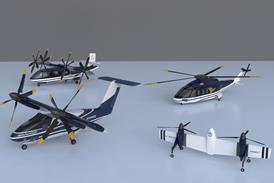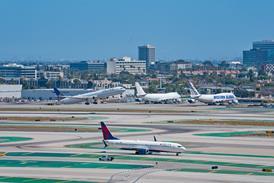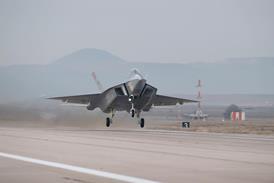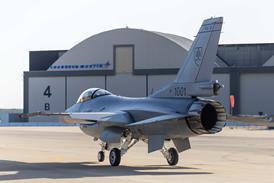Wg Cdr Dave Best, OC ETPS, says commercial freedom and practices engendered by being part of DERA means that if the school can establish a business plan for DERA and MoD investment, then ETPS can develop further. It recently received a new Eurocopter Twin Squirrel helicopter, on long-term lease from McAlpine. It is fitted with partial flight test instrumentation and makes up a helicopter shortfall. DERA's purchase of second-hand Dassault Dornier Alpha Jets last year has released a Hawk that has been made available to ETPS. From next year the school will have access to the Alpha Jet, increasing the range of types that can be flown by a student at Boscombe Down.
Recent aircraft improvements at the ETPS include equipping the School's two Sepecat Jaguars with full-flight test instrumentation, while its BAC One-Eleven has been fitted with a differential GPS-satellite navigation system and on-board data reduction equipment. The aircraft is now used for take-off performance training, which is particularly relevant to FAR/JAR25 civil airworthiness trials.
A typical student from last year's course flew 113h - around 7h less than the school plans to provide - on 29 types of aircraft, five as captain.
Pichené says next year the Eurocopter Tiger anti-tank helicopter and Dassault Rafale fighter will become available for experience training, and EPNER hopes to acquire a Mirage 2000D to replace the Mirage IIIs in two or three years. A variable stability EC-135 under development by Eurocopter Germany is also likely to become available in 2002 as well as a CEV Puma with flexible avionics displays.
In the long-term, the USNTPS has set its sights on replacing its Rockwell T-2 Buckeyes and on upgrading its T-38s in line with the USAF's plans. The upgrade plan is driven more by support costs than to provide a better training platform "If we don't we won't have the aircraft much longer," says USNTPS commanding officer, Cdr Bob Stoney. It also has a pencilled-in requirement for a tiltrotor, but is not optimistic of receiving anything in the near term.
"We lag behind in terms of what the state of the art is as defined in the military. Our pilot graduates are testing the military state of the art, but we can't have that 'state of the air', such as a Bell Boeing V-22 or F/A-18E/F, here at the school because it would not be safe," says Stoney.
The USAFTPS's workhorse T-38s will, like their USNTPS counterparts, receive the C-standard glass-cockpit upgrade and will stay in the inventory for some time. "They are really affordable and keep people sharp," he adds. The T-38 is also the cheapest supersonic jet to fly on an hourly cost basis - 2.5 times cheaper than the F-16 and a quarter of the F-15's cost.
Some aircraft are contractor-operated, including the Northrop Grumman T-39E airborne systems test and training aircraft and the National Test Pilots School Aermacchi MB326. The MB326 is a "stop gap measure, and we are still looking at different options for the long term for inverted spin work", says Cameron. Few light jet aircraft appear to meet the USAFTPS's requirements, however, and Cameron says everything from the Alpha Jet to the T-2 Buckeye has been considered. The school has been using the MB326 since retiring its elderly Cessna A-37 spin trainer because of fatigue issues.
Source: Flight International























